On the 26th of February, I was walking around the property and noticed the first flowers of the year. These were Crocus vernus, the Spring Crocus, native to the Alps, Pyrenees, and the Balkans. I did not plant these here. Judging from their location up on a hillside, I doubt that they were planted in that spot by previous owners either. Instead, they are naturalized and have spread here via seed. This makes me wonder what pollinator takes advantage of them. Recently I heard Thomas Rainer, a designer whose ideas always seem to make so much sense until—all of a sudden, they don’t, say that early spring exotics are essential for pollinators. That is commonly repeated pseudoscience, but something pollinates these flowers. A little research on the Internet suggests that Andrena, ground-nesting bees found in the northern hemisphere seem to like them. I wonder what they are really looking for this early in the season. I asked Sam Droege and he said that Apis will be out on any warm day over 60 and that Andrena will be looking for Acer rubrum, red maples, which bloom early. If you haven’t seen Sam’s amazing bee photography, check it out on Flickr. Apis mellifera, the honeybee, which is not native to North America, also seem to like them.
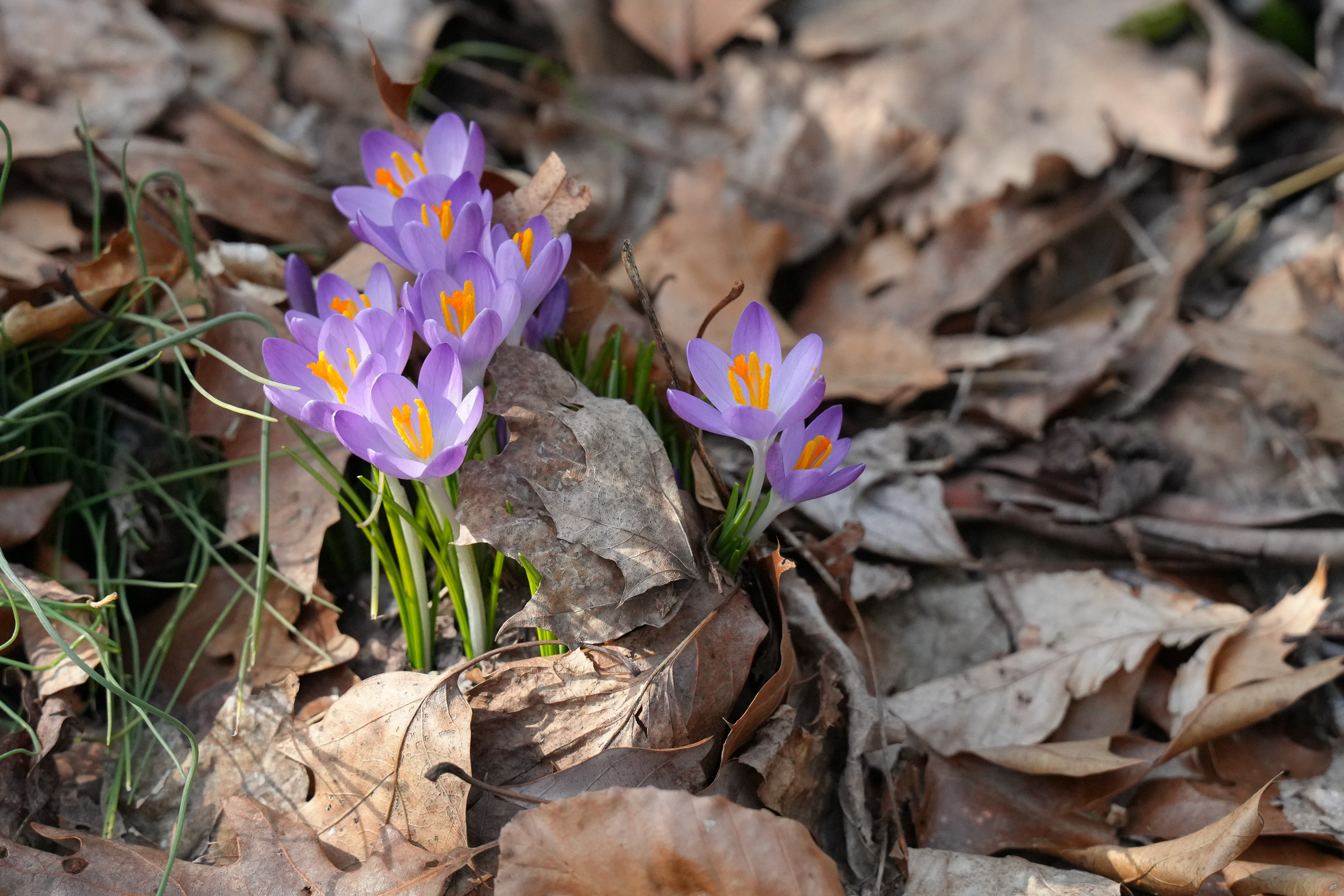
Crocuses made their way to this continent via the British colonists. Crocus sativus, or saffron, is the most valuable of the genus, although it blossoms in the fall and is not found in the wild here. It has been cultivated for so long that any wild population is no longer extant. Saffron flowers in the fall, but it is a crocus, unlike the “Autumn Crocus,” which is native to Great Britain and Ireland as well as much of Western Europe. “Autumn Crocus” is Colchicum autumnale and is also known as Meadow Saffron, Naked Boys or Naked Ladies, but it is a member of the Colchicacae family and in the order Liliales (Lilies) whereas true Crocuses are in Iridaceae family and the order Asparagales (which includes not just asparagus, but orchids, agaves, aloes, and the alliums as well). Colchicum autumnale is extremely toxic, so just don’t try making saffron from it. In England, saffron was already discussed as a drug by the tenth century and was cultivated extensively there for some centuries. According to botanist George Maw (1832-1912), who published the remarkably thorough The Genus Crocus in 1886, Crocus vernus was found wild in the Netherlands in the seventeenth century, suggesting it had been cultivated as a flower some time prior.
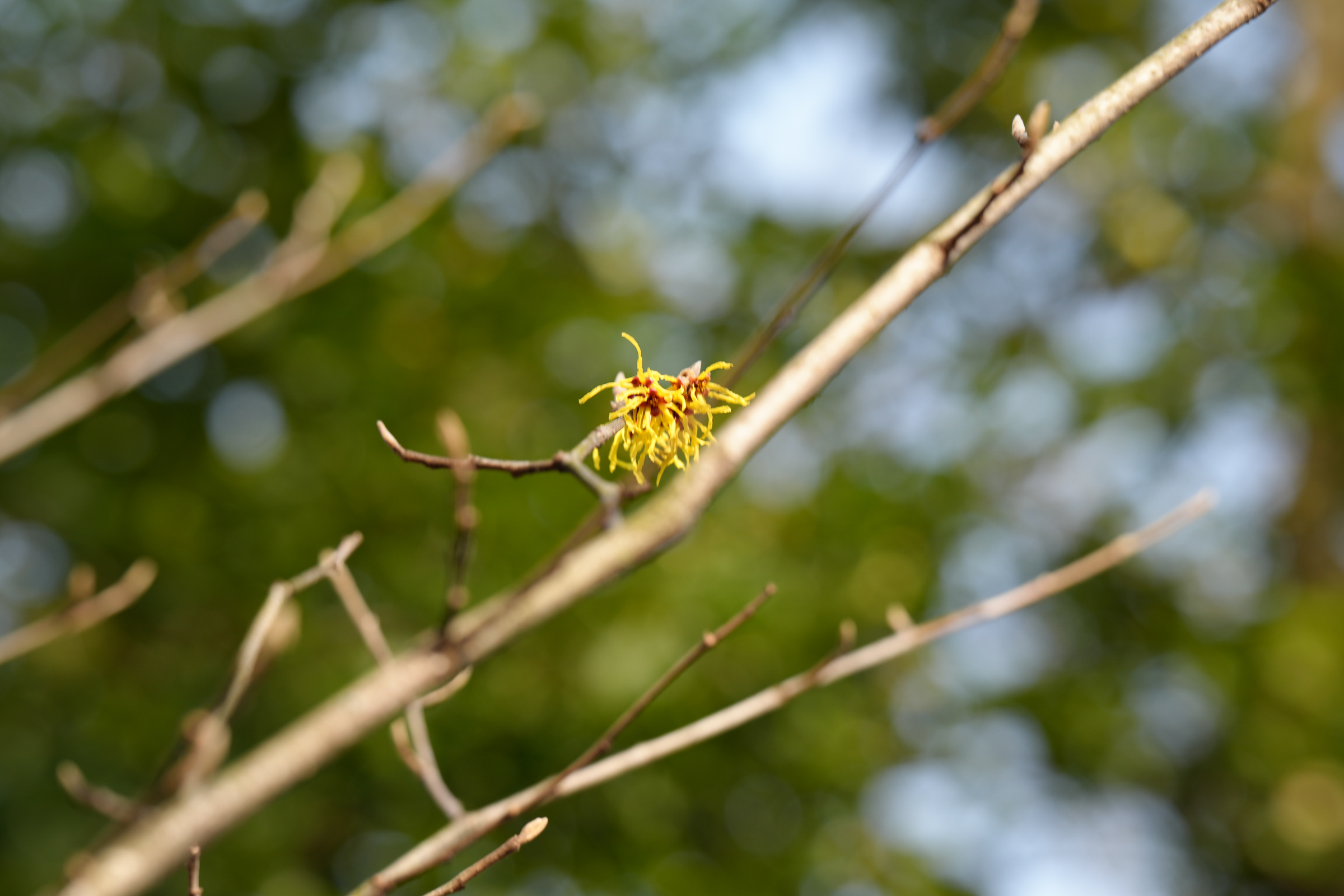
With the crocuses blooming, I thought to check in on our other nonnative early bloomer, the Hamamelis vernalis, Ozark Witchhazel. This one I planted, having found it at a local nursery. I shouldn’t have done it, but what did I know? Still, it’s a healthy bush now and it’s probably harmless. Ozark Bill has an interesting post putting together information about Hamamelis vernalis and which pollinators might use it.
It’s a month after I first started writing this post and now other plants are blooming. Narcissus, planted on the property by previous owners, has been in bloom since the weekend of March 16th. Forsythia started by the weekend of March 23rd. I am not a fan of Forsythia. Its blooms are dull, the bush requires constant trimming, and after its brief burst of yellow, it becomes an ugly and unkempt plant for the rest of the year. We had some in the back when we moved in. I pulled it all out. The Forsythia we see on our property is actually a neighbor’s. I trim it aggressively when it goes over the property line. I suspect it may become invasive one day. Either way, I don’t like it.
I was much more excited to see my earliest natives emerge. Mertensia virginica, the Virginia Bluebell, which I first saw on March 10, is a fabulous plant that I have planted in front of the house—among other places. It is a delight to see it every year, it suggests to me that everything will be alright. Mertensia is a member of the family Boraginaceae and the order Boraginales. Once I looked that up, it made perfect sense as it does have a resemblance to Borago officionales or Borage, which we grow in a raised bed on our deck to put in gin and tonics. Where Borago lasts quite a while, Mertensia does not. By early June, it will have melted away and other plants will come to the fore. Mertensia, like Borage, can be eaten and apparently has an “aquatic” flavor. It has no relationship to the Common Bluebell of the British Islands, Hyacanthoides non-scripta, which is highly toxic. Mertensia is an easy plant to grow. You plant the rhizomes in the soil and you are ready to go.
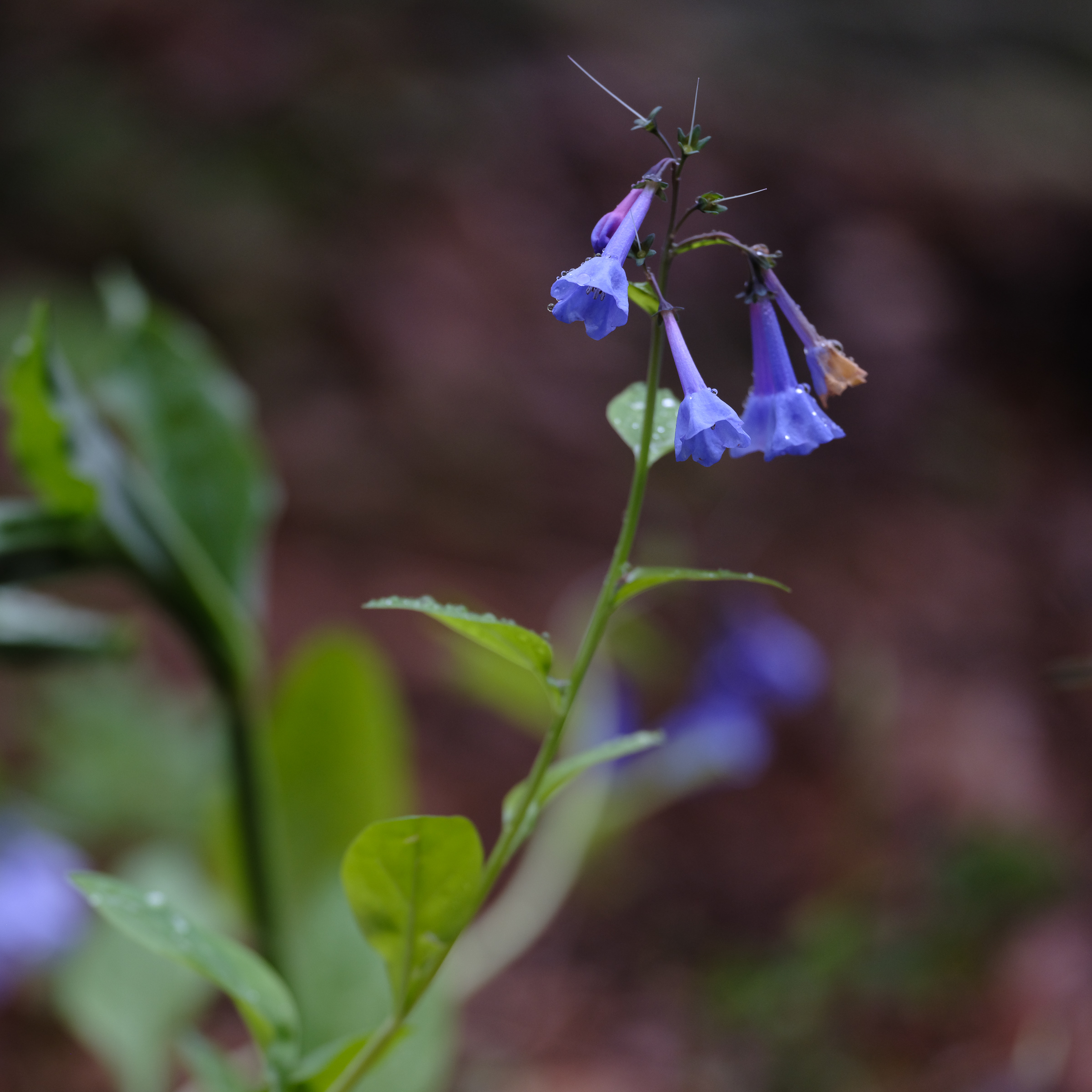
On March 10, I also noticed the buds in Packera aurea, Golden Groundsel or Golden Ragwort or, according to Wikipedia, “squaw weed, life root, golden Senecio, uncum, uncum root, waw weed, false valerian, cough weed, female regulator, cocash weed, ragweed, staggerwort, and St. James wort,” I have to say that the yellow flowers (asterlike, since Packera, the groundsels, is a genus within the Aster family, Asteracae) are not a big delight for me, they are fine, nothing special, but I do love the purple buds and the plant’s ability to spread makes it a good native groundcover, particularly in shade.
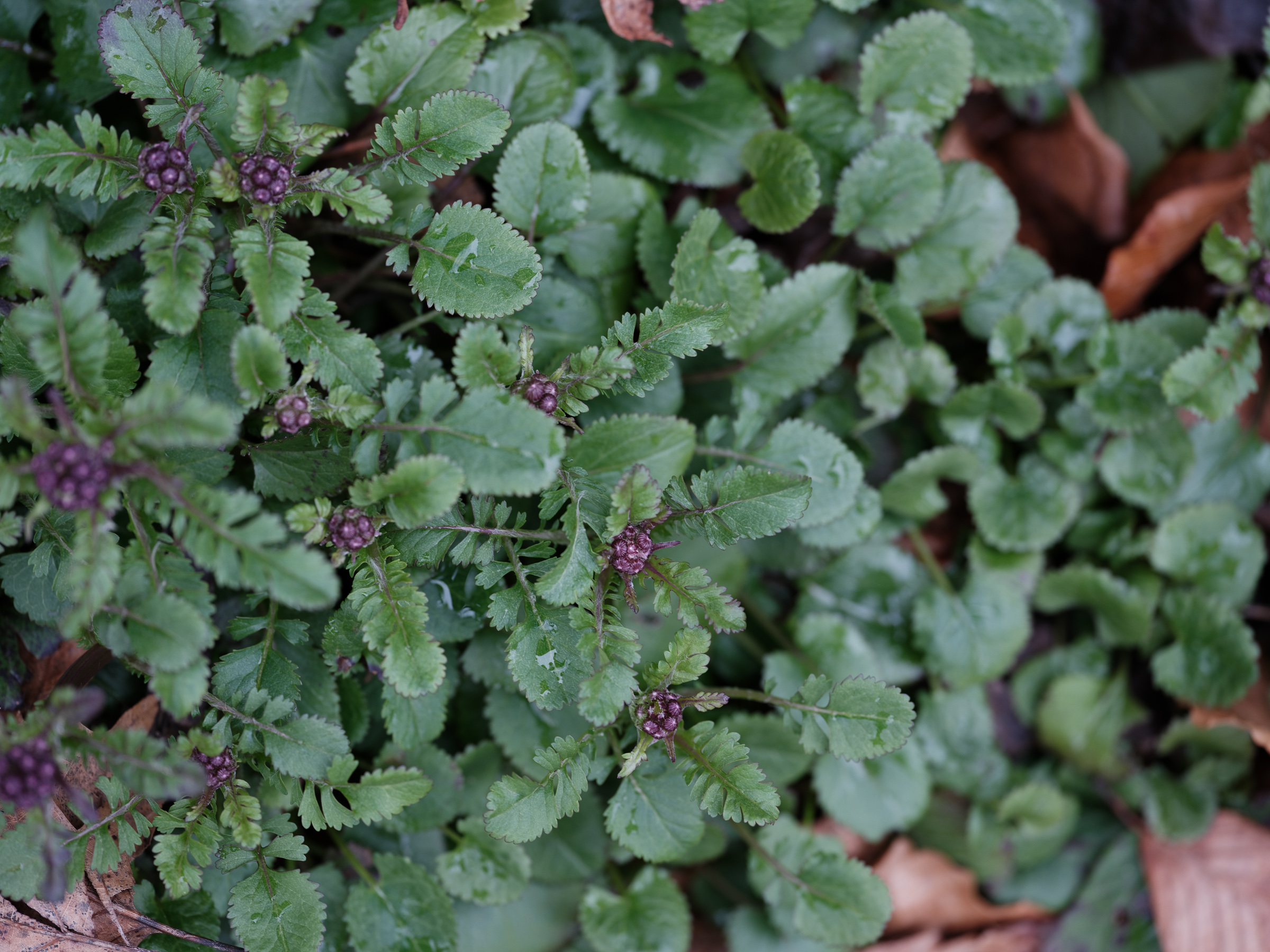
By the twenty-third, three new flowers appeared. The first, which I planted last fall, is Hepacita actiloba, sharp-lobed hepatica. You will not find a plant as interesting as this among the exotics at the garden center. In his 1907 A Bunch of Herbs, English naturalist John Burroughs called hepaticas “the gem of the woods.” Ours are no less compelling. They are members of the Ranunculaceae, the buttercup family. I have seen them in the woods in Vilnius, not far from Antakalnis Cemetery, where my parents and my friend Valdas Ozarinskas are buried.
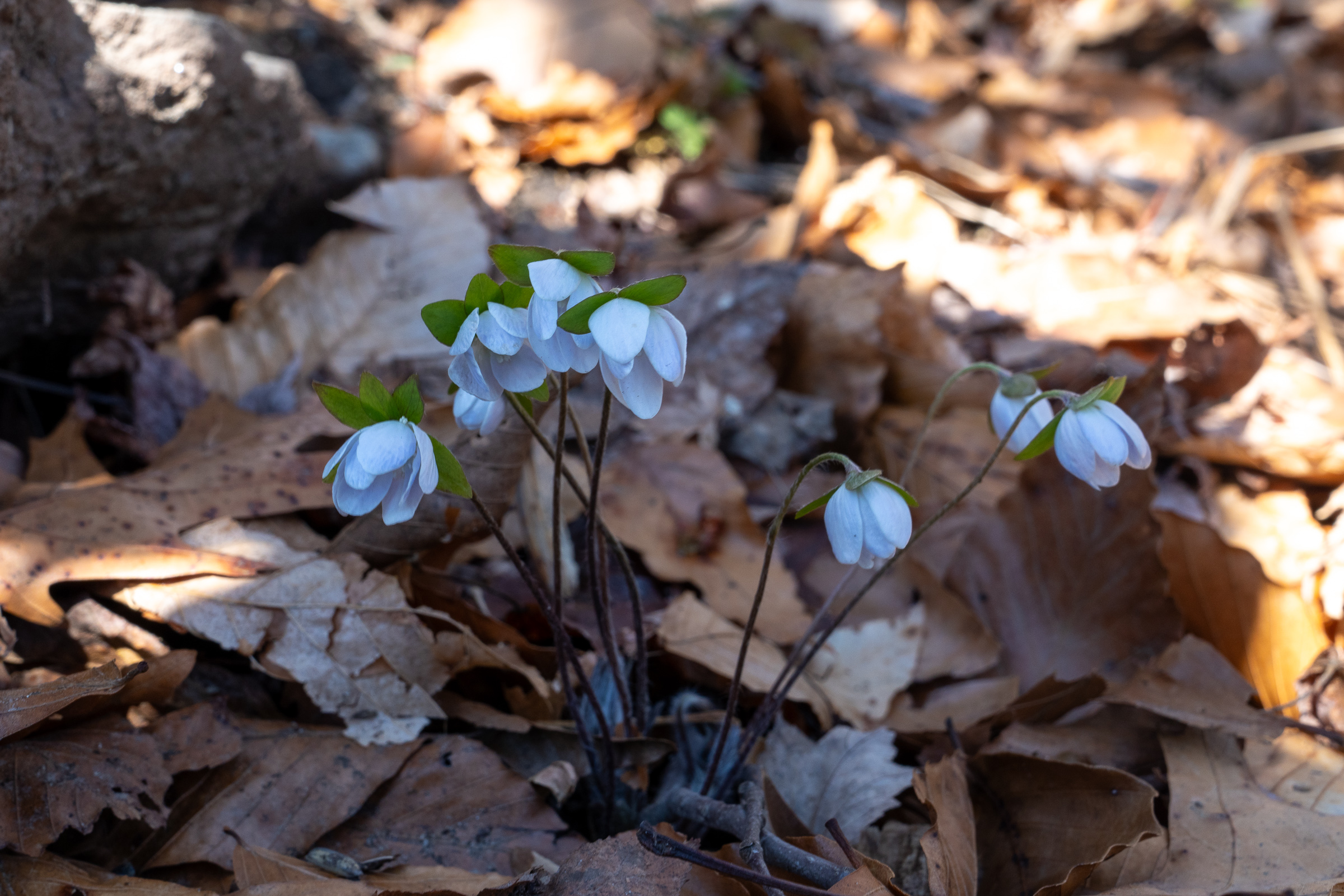
We have three Salix discolor bushes, or pussy willows, also northeast natives. The male plants have fuzzy nubs, or catkins, that give the plants that name (katteken is apparently Old Dutch for kitten, or so the Brooklyn Botanical Garden says here). Salix blooms are rather peculiar themselves. The deer will eat these, so I am letting them grow quite tall. As they mature, I hope to be able to bring some into the house as cuttings, just as I did for my mother from our old property in Stockbridge, Massachusetts over forty years ago. It’s raining quite heavily and the blooms are quite high up so I’d need a ladder to take photographs.
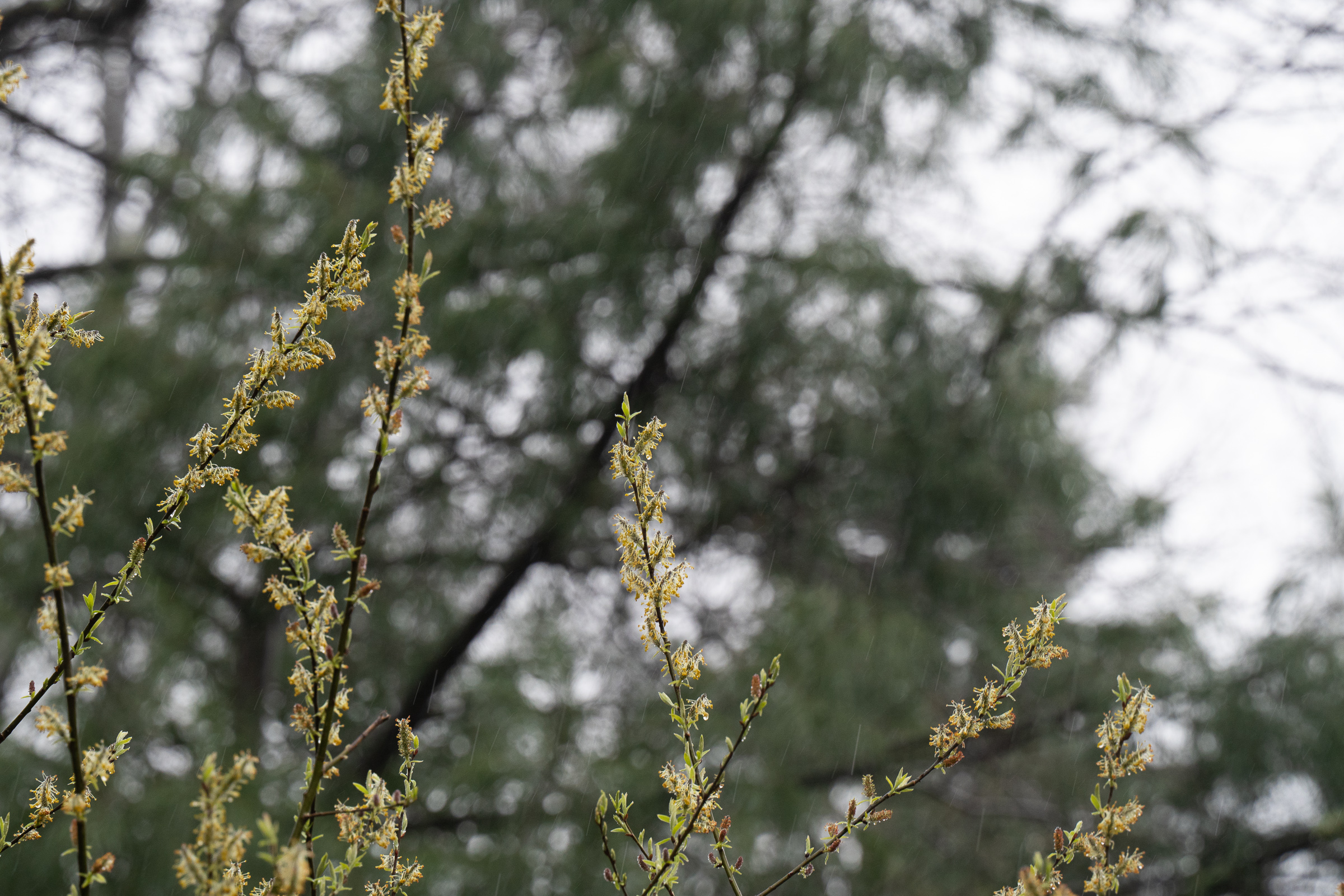
Certainly the oddest flower of these is that of Carex plantaginea, the Seersucker Sedge. What a cool plant this is. The leaves are pretty wild, broad, and textured, tapering to a point at the tip. In my garden, the leaves persist all winter. It’s a phenomenal northeast native that is easy to place in the garden. The flowers are strange little yellowish-green stalks with brown tips, like miniature cattails.
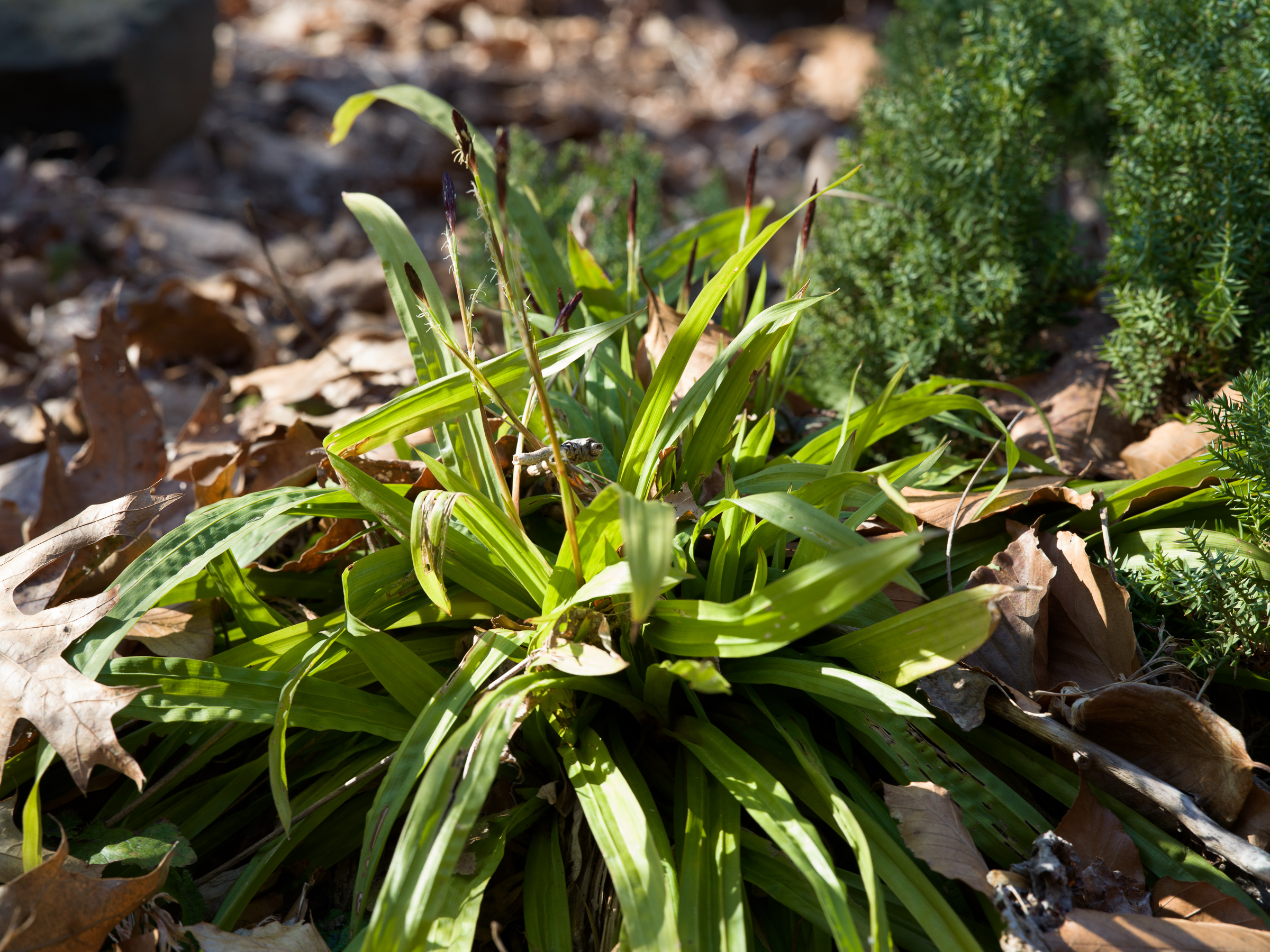
While they won’t bloom for another month, Podophyllum peltatum, Mayapples have come up and spread their umbrella-like leaves, soaking up the sun before the trees leaf out. Anyone who says one needs exotics to have interest in a garden has never seen this plant.
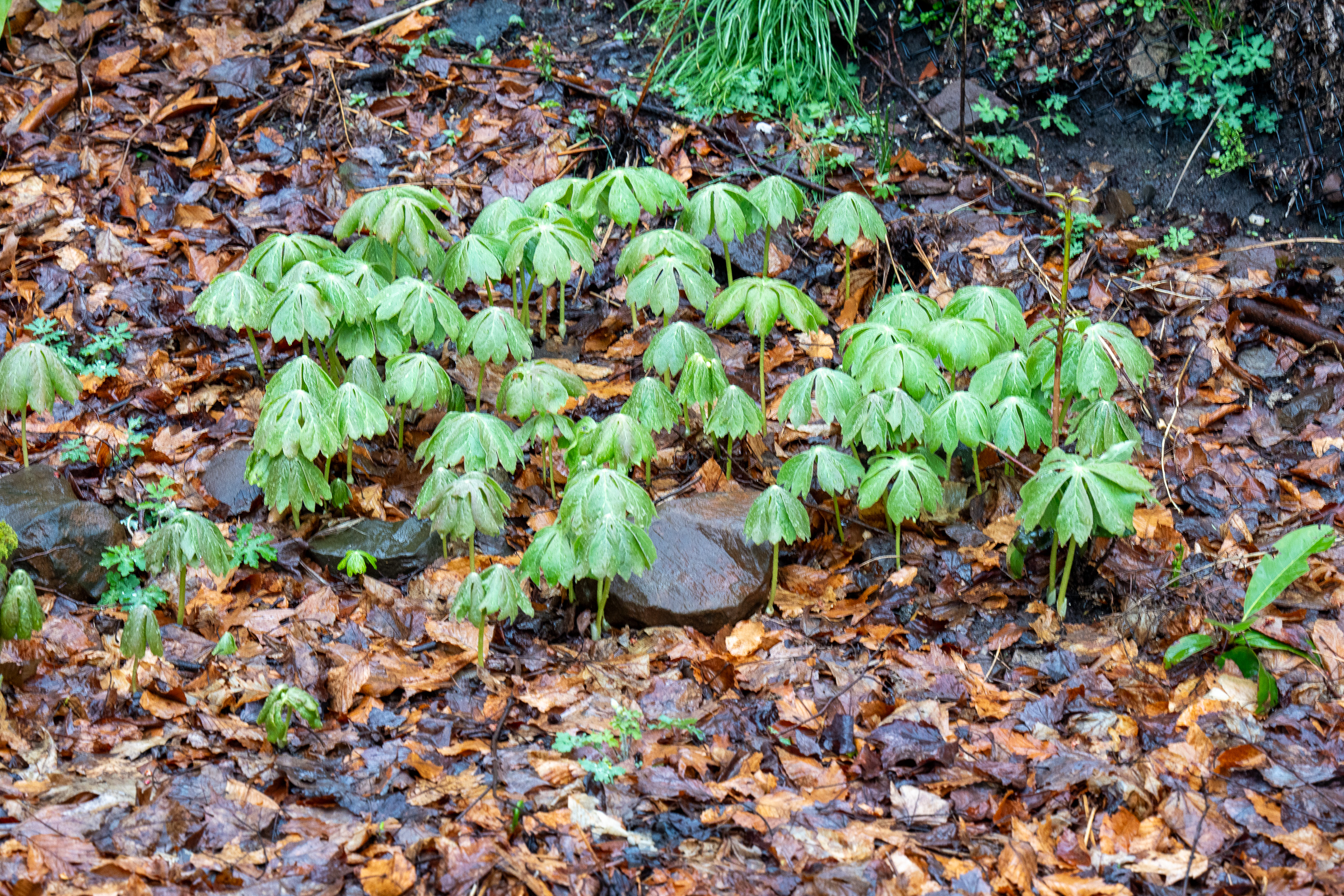
Rounding out the March blooms, I spied the first Jeffersonia diphyllia or Twinleaf. This delicate-looking plant is a member of the Berberidaceae, the barberry family, but unlike the repulsive Berberis thunbergii it isn’t found in Home Depot garden centers across the land. With a major storm upon us, many blooms have closed up to await sunnier times so I don’t have any good photographs of the twinleaf flower this year, although here is what the leaves looked like in mid-April of 2022. You can see the flowers have become seed pods. Twinleaf is not a spring ephemeral as it keeps its leaves all year, although it is commonly associated with them.
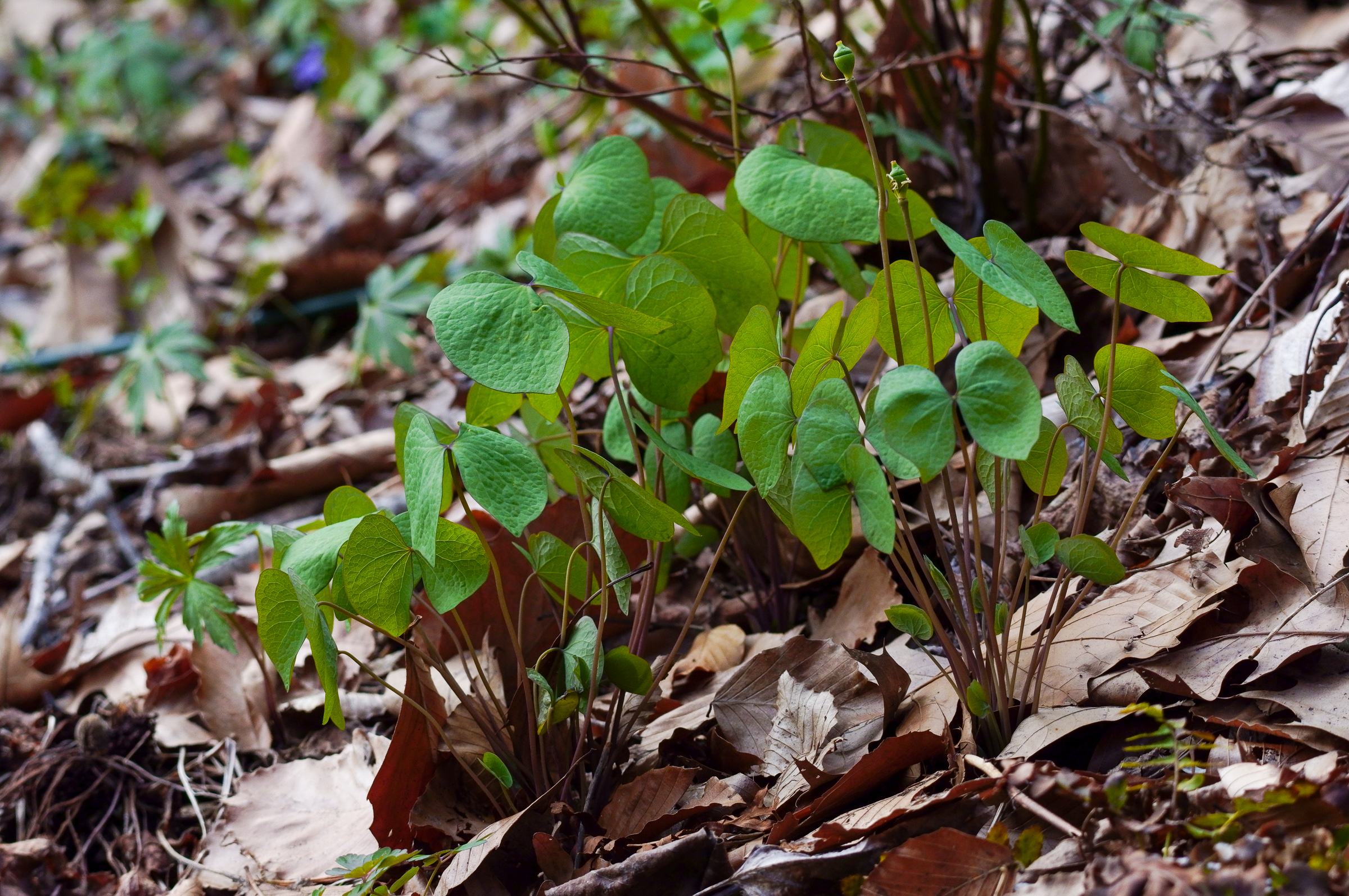
Neither is th first plant to bloom this April—Stylophorum diphyllum, the gorgeous Woodland Poppy, not native to New Jersey, but found in the Ohio River Valley. Strict ecologists and botanists disagree, but I don’t mind planting a plant from a nearby state. It’s a far better thing to do than planting an exotic and, I suspect, a lot better than planting a cultivar of a native as well since it won’t pollute an existing gene pool.
All these blooms reminded me of something I have been wanting to do for a long time, which is keep a phenological diary, a detailed record of the timing of natural phenomena such as the first appearance of leaves, flowers, and fruits, migration patterns of birds, the emergence of insects, and other wildlife activities in relation to seasonal and climatic variations. Phenology, as the study of cyclic and seasonal natural phenomena, especially in relation to climate and plant and animal life, is fundamental to understanding the effects of climate change on the environment from year to year. Keeping a phenological diary helps scientists, ecologists, and nature enthusiasts observe and document long-term trends in the environment, providing valuable data for research on climate change, ecosystem interactions, and the timing of agricultural practices. Such diaries can span over years or even decades, offering insights into the shifting rhythms of the natural world and helping to predict changes that might affect biodiversity, agriculture, and conservation efforts. Through meticulous recording, phenological diaries contribute significantly to our understanding of the natural world and the impact of human activities on ecosystems.
Phenology is arguably the first form of history. Ancient civilizations, from the Chinese to the Greeks and Romans, observed the recurring patterns of plant and animal life to guide farming practices. Drs. Michael Balick and Gregory Plunkett of the New York Botanical Garden have been exploring how the people of Southern Vanuatu traditional eschew solar-based calendar-keeping in favor of some 111 species of “calendar plants” to understand when to accomplish various tasks, from planting and harvesting crops to fishing for lobsters. Read more about their work on the NYBG site or listen to Thomas Christopher’s Growing Greener podcast. On rare occasion, we still do things like this, for example, applying corn starch to annual weeds in lawns is supposed to be done when Forsythia are blooming (better yet, get rid of the tired old lawn).
Our family is getting ready for a trip to Japan on Friday and while our visit is timed with spring break at our 18 year old’s high school, it happens that a late cold snap has meant that the sakura or cherry blossoms are going to be in full bloom when we get there on Saturday. You can follow the detailed forecasts on the Sakura Weather Map. Japan’s fascination with cherry blossoms (sakura) has been a significant cultural and scientific interest for centuries and is one of the most vivid examples of phenological events deeply embedded in a nation’s cultural traditions, symbolizing the transient nature of life due to the brief and spectacular blooming period of these flowers. Historically, the Japanese have maintained detailed records of cherry blossom flowering times, which date back over a thousand years. Apart from cherry blossoms, Japan also celebrates the flowering of other plants such as plum (ume) blossoms, which bloom slightly earlier than cherry blossoms and are also culturally significant, symbolizing perseverance and hope. The appreciation and celebration of these and other blossoms are reflected in numerous festivals (hanami) dedicated to viewing and enjoying flowers, indicating the societal importance of these phenological events. The phenological records are not only of cultural and historical interest but have also become valuable scientific data for studying climate change and its impact on plant phenology. The timing of cherry blossom flowering is highly sensitive to temperature changes, making it an excellent biological indicator for assessing the effects of global warming. Studies have shown that cherry blossoms in Japan are blooming increasingly earlier, correlating with rising temperatures. The oldest phenological observations, of the blossoming of sakura in Kyoto date to 705 CE and were referenced during the signing of the the 1992 Kyoto protocol.
As a scientific practice in the West, phenology got its start in 1736 when English landowner and naturalist Robert Marsham started keeping detailed records of 27 natural events in springtime. He called this his Indications of Spring, continued for over sixty years, a practice that his family kept up into the twentieth century. Do read more about Marsham’s work in Hugh Aldersey-Williams’s “From Snowdrop to Nightjar. Robert Marsham’s ‘Indications of Spring’ (1789)“. Marsham’s initiative laid the groundwork for phenology to evolve into a structured scientific discipline. The term “phenology” itself was coined in the 19th century by the Belgian botanist Charles Morren. Morren derived the term “phenology” from the Greek words “phaino” (φαίνω) meaning “to show” or “to appear” and “logos” (λόγος) meaning “study,” essentially translating to “the study of what appears or happens.” It was not until the 20th century, with the advent of modern scientific methods and technologies, that phenology expanded significantly, incorporating more quantitative methods to study and predict the timing of natural events. Today, phenological records are invaluable for researching climate change’s impacts on ecosystems, demonstrating the enduring importance of these meticulous observations made over centuries.
I wondered how to close this essay. It has taken a month to write due to family emergencies and I admit some frustration that it constantly struck me that I had once again fallen behind in keeping a phenological diary as I had no idea where to do so. Excel? A paper notebook? A digital diary? Where? Ultimately, my record of this month at Highland House took place on this very page. But adding further observations in this post is not sustainable nor is it a model for others, but in finishing it, I was looking for more information on phenology as a practice and to my delight, I discovered the USA National Phenology Network and it’s Nature’s Notebook application which is available for smartphones. It requires a couple of hours of coursework, but this seems fabulous. I will update this post as I learn more.